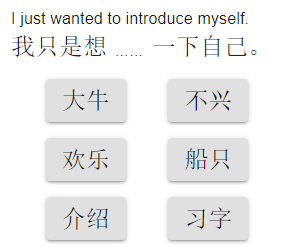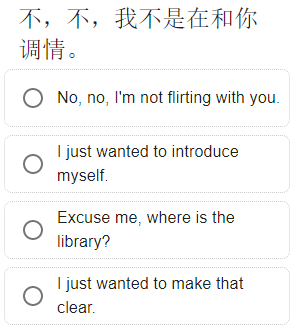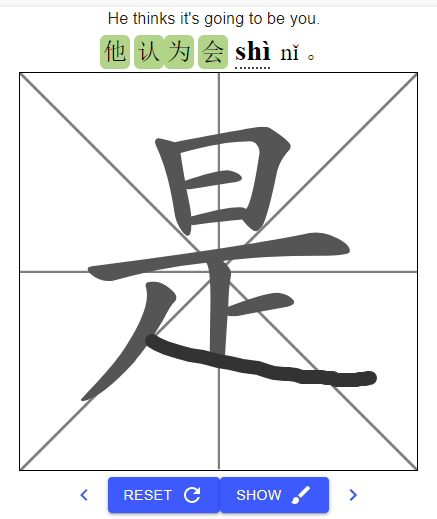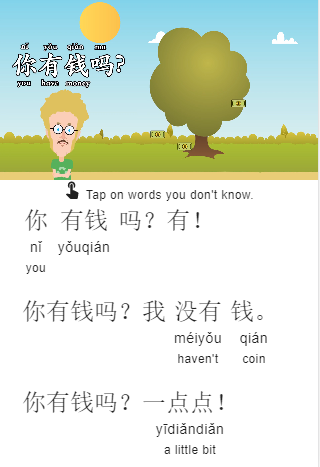Stop learning Chinese with flashcards
Spaced-repetition flashcards are useful. I can’t deny that, but at the same time I can’t recommend relying on them too much for learning Chinese.
When I was learning Chinese, I used flahscards extensively. Every day I rode the bus to work for 40 minutes, and 40 minutes again back home. During that time, I would use spaced-repetition flashcards on Pleco and Skritter every day while I sat on the bus, drilling HSK words for over an hour every day.
After doing this consistently for about a year, I learned about 1500 characters and was able to pass the HSK4 test.
So if they were so useful, why don’t I recommend them? In my opinion, there are a number of significant shortcomings with flashcard learning.
- They’re boring and tedious. If I wasn’t sitting on a bus for over an hour a day with nothing else to do, I doubt I would have had much motivation to set aside time to work on them every day.
- It’s hard to take any breaks from spaced repetition. On a typical day I would review about 100-200 cards. I often had about 300 on Mondays if I didn’t study on the weekend. Sometimes I would go on short trips and had to do 400-500 when I came back. The final nail in the coffin that made me give up studying with flashcards was when I went on a 2-week trip, and came back to face over 1000 cards scheduled for review.
- Flashcards are devoid of context. This was my biggest frustration with studying flashcards. A card typically just shows an isolated Chinese word with a list of English definitions, with no indication of how common the different meanings are.
For example, the card for the character 错 had the definitions “fault; demerit; interlocked; jagged; intricate; grind; move out of the way; stagger; wrong; mistaken; inlay with gold, siver, etc.” By far the most common meanings of 错 are “wrong” and “fault”, but there was no way I could know this just by looking at the flashcard.
Learning vocabulary through flashcards does not guarantee that the vocabulary will be functional. Flashcards train a very specific recall path, with a single link between a Chinese word and an English definition. Instead of trying to memorize English definitions of 错, what if I saw the way 错 was typically used in context?
- 对不起,我错了。
Sorry, my mistake. - 这不是我的错。
It isn’t my fault. - 这个主意不错。
That idea’s not bad.
Sentences like this would have been much more helpful than the complicated dictionary entry in the flashcard:
- It’s more interesting. Understanding full sentences is a big step up from drilling individual words.
- It creates more connections in the brain. Reading words in their context forms associations between the word you want to study and the words that surround it in the sentence.
- It improves knowledge of multiple words simultaneously. Learning through full sentences helps you review all of the words in the sentence at the same time, instead of drilling one word at a time.
- It gives a more realistic idea of how the word is used in real life. Unless you’re reading some pretty advanced stuff, you’ll likely never need to know that 错 can mean “jagged” or “interlocked” or “inlay with silver”. Don’t waste your time learning obscure meanings that you will rarely encounter.
This idea of learning based on complete sentences was a large part of my motivation for developing Dong Chinese. My goal was to teach every single word through exercises with complete sentences, to encourage learning every word in context, rather than slogging through isolated definitions in flashcards.
On Dong Chinese, there are five different ways to study:
1. Fill-in-the-blank exercises

You will be presented with a sentence in Chinese with an English translation, and you have to figure out what the missing word should be.
2. Image/sentence matching

You will see an image, and you must choose the matching sentence in Chinese, or you will see a sentence in Chinese, and you must choose the matching image.
3. Chinese/English matching

You will see a sentence in one language, and you have to choose the matching sentence in the other language.
4. Handwriting

Given the pinyin and English translation, you have to handwrite the sentence in Chinese characters.
5. Watching media

Dong Chinese will recommend media that is comprehensible to you. You can tap on unfamiliar words to see the pinyin and definition. The system will remember which words you tapped on, and update its estimate of your knowledge accordingly.
Want to learn how to read and write Chinese? Sign up at Dong Chinese.